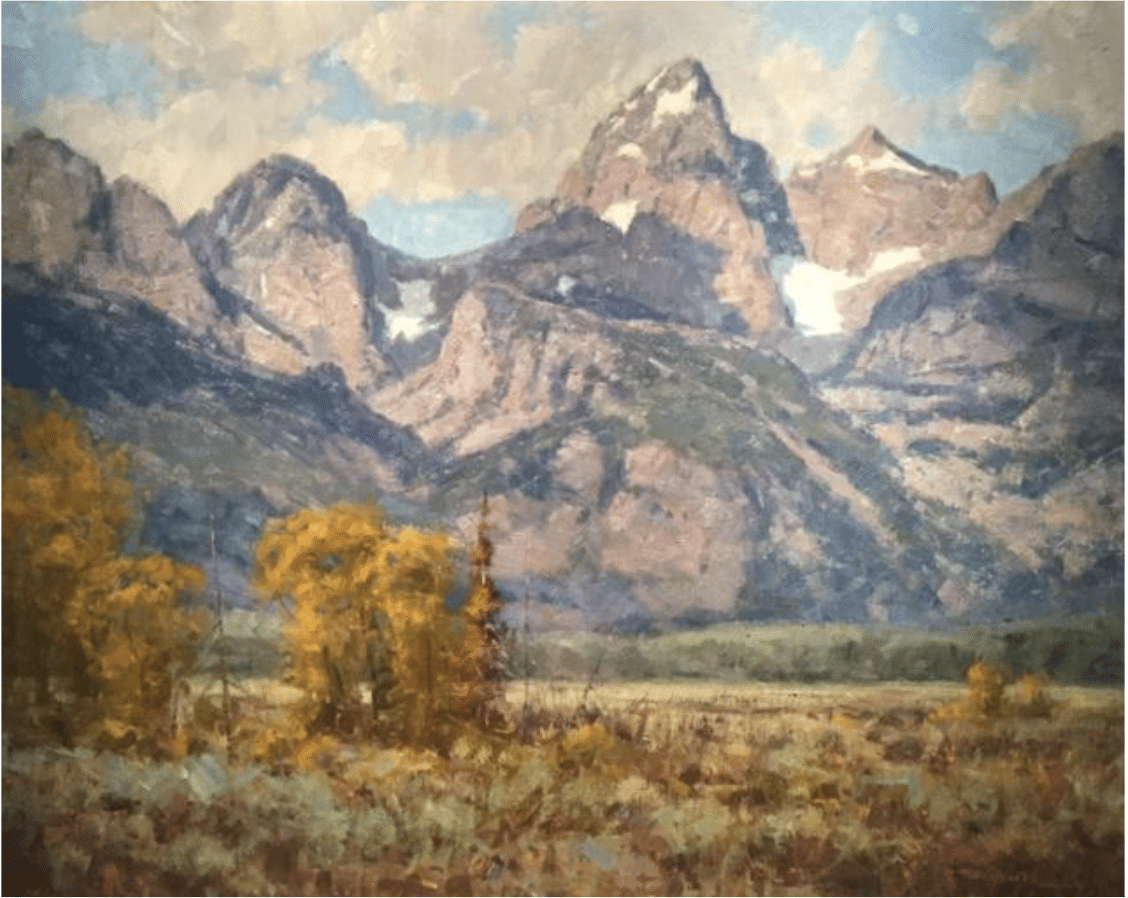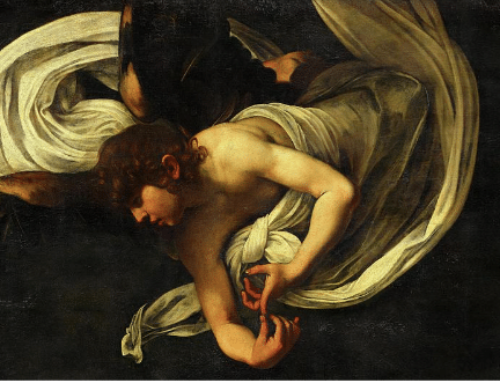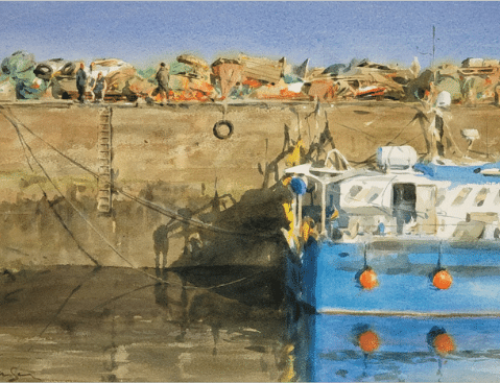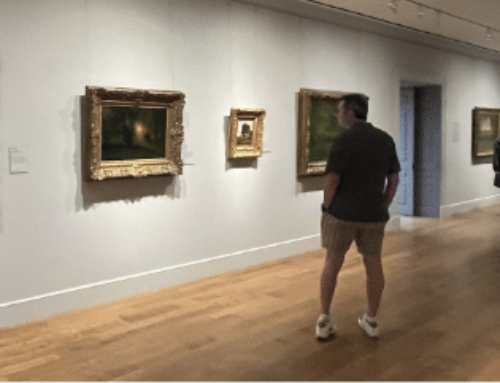A Guest Post By
John Hughes
What’s Holding You Back in your Quest to Become a Better Painter?
Probably the same thing that challenged my progress as an aspiring artist many years ago, and the same thing that holds a lot of art students back: preconceived notions about the painting process.
That was the short answer. Now for the long answer. I am going to attempt to tackle that question in a circuitous route, but one that hopefully will connect with the reader.
There is no end to learning, and the more I realize that, the happier I am! There is something very satisfying about “never reaching the end,” to quote an old Moody Blues song. Reaching the end would mean boredom, and the thought of that should give us all pause!
What I am referring to specifically is my quest for personal knowledge in the field of landscape painting. Along with that, as I progress, I have a desire to share that information with the larger painting community around me. It’s interesting to me to see the progress I have made as an artist over the span of more than 35 years.
About those preconceived notions…
This is progress in understanding what the painting process is all about — and what it is not about. Let me retrace my steps to a certain extent, without getting too labored, to make my point. See if you recognize any of these traits in yourself!
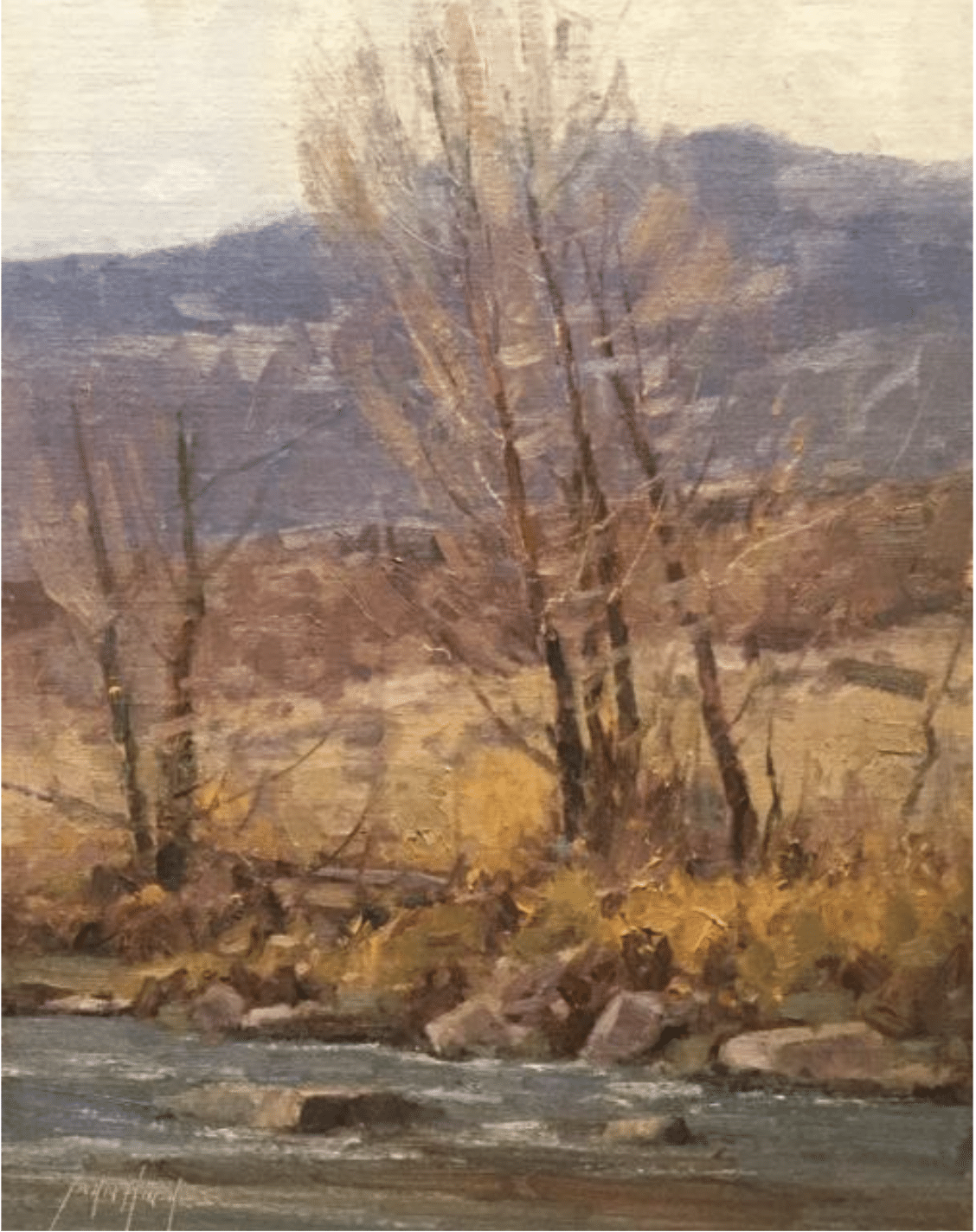
John Hughes, “Field Study,” oil, 14 x 11 inches
When I was younger, the goal that I set for myself was to become a better painter of “pictures.” As it is for many beginners, the goal was always the “picture, or beautiful scene.” I was enamored with certain artists and styles of painting and placed a lot of emphasis on surface enhancements, at the expense of the overall (and all-important!-ed.) design of the piece.
The reason for this was simple: I lacked perspective and thought that things like paint quality and fancy edges would solve all my artistic problems, and therefore concentrated too much on surface gimmickry. When this failed, a retreat to more punched-up colors would usually follow, or punched-up values — anything to mask the real problems with the painting. This wasn’t a purposeful evasion of the truth, but the last futile struggles of an artist in trouble, who was grasping at straws and drowning in ignorance. Ever been there? Read on, my friend!
Some years ago I began teaching college art classes and workshops on a more regular basis. In order to teach well, I had to understand well and be able to communicate effectively. This started me on the road to writing about the painting process in order to more clearly catalog my thoughts on the subject, and, more importantly, to keep me asking questions and finding the answers!
This in turn led to many “how to” papers that I shared with my classes and eventually with larger audiences at venues like the Scottsdale Artists’ School and in several national and international art publications. This writing sparked more and more questions, and more and more answers.
So I share this in order to bring the discipline of landscape painting to higher levels, not only in my own work, but with the collective body of artists out there, who also thirst for knowledge in this field of endeavor.
Seriously, I’m not saying this in an egotistical way, but I wish I had someone like myself all those years ago. Someone who would have set me straight in the days when I saw the world of painting through clouded lenses that were more influenced by the romantic idea of painting than how I approach it today! This is knowledge born of frustration, long hours of practice and dedication that is now paying off, but holy cow, what a road it’s been!
On a rather sad note, though, if I were somehow able to go back in time, would I have believed the older, wiser me? I suppose the older me would have admonished the younger me, in much the same way a concerned parent lectures an adolescent teen to do the right thing! Like the parent who sees the road clearly, with all of its pitfalls, through the lens of a long journey fraught with numerous mistakes along the way.
Truthfully, I have no regrets about my own journey and realize every hard-won artistic tidbit was worth the effort. I also understand that passing these gems of knowledge out like candy may, in some ways, cheapen the perception of them in the minds of others who are not yet prepared make a course change. Thus it is that this learning is often, if not mostly, rejected by those who would benefit the most!

John Hughes, “Rocks Along the Provo River,” acrylic, 5 x 23 inches
I don’t mean “rejected” in a negative way —more overlooked, because the student is searching for answers in all the wrong places at a certain stage of their progress. That was me years ago! Now that I have some miles in the rear-view mirror, my hope is to find a few others who are ready to move on and have acquired the frame of reference necessary to grasp new ideas that are truly life-changing in their artistic scope.
One idea that I would like to pass along is this: Competent landscape paintings begin and end with one overriding concept; understanding light and design. I’ve devoted whole series of articles to this subject, including five essential concepts I called the “Painter’s Tool Box of Expression.” In outline, they are:
- Drawing and Creativity
- How to Mix Color and Good Harmonies
- Designing Your Paintings With Values in Mind
- Edge Control, and
- “Brushwork”
What this (list of learning points) does is show the struggling student what to study.
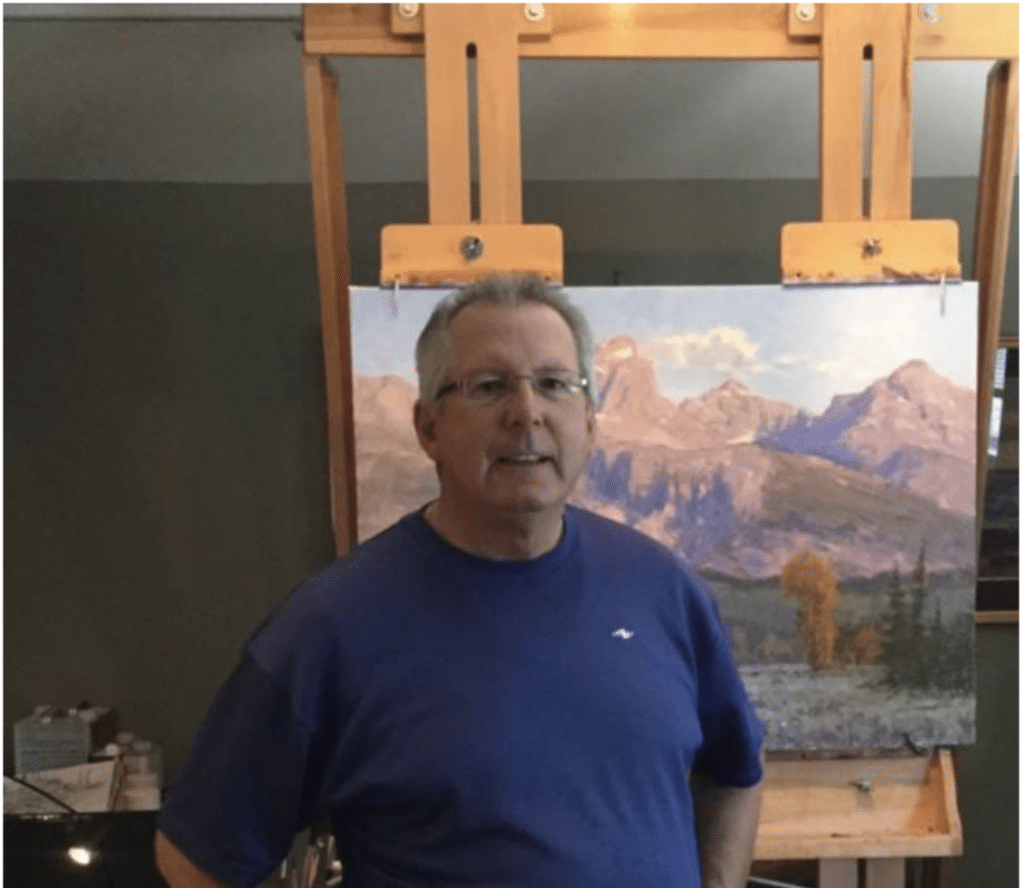
The Older Me
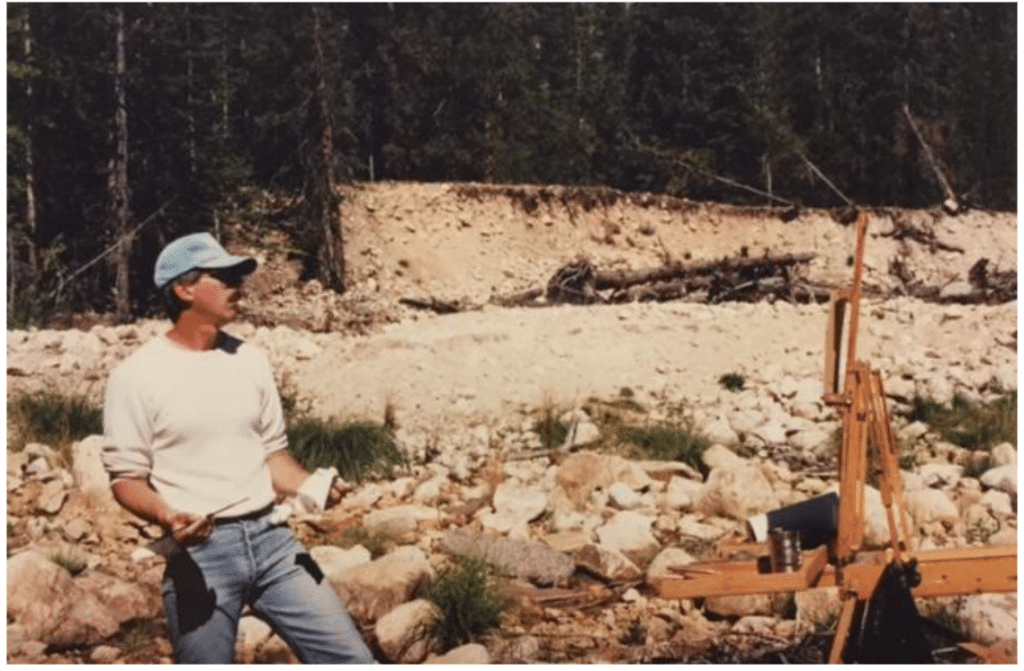
The Younger Me
And What It Comes Down To, via A Question:
What Is the Purpose of Light and Design in Painting?
(A conversation with a painting student, possibly the younger me!)
Teacher: To answer this question, let me ask another one in order to clarify the first. Is every scene in nature worthy of a painting? If your response is no, you are correct.
Student: Why not?
Teacher: OK, let’s explore further. Put another way, a professional photographer might tell you that there is a difference between a mere snapshot and a good photograph.
Student: Why is that?
Teacher: Well, that gets to the very heart of the first question, and the answer is: because not all scenes have interesting subject matter!
Student: Then how come some artists can paint some very mundane subjects and make them look beautiful?
Teacher: Sure, you are right about that. Practically any subject can be compelling in the right light and viewed from an advantageous angle.
Student: Now we are getting somewhere! What is it, then, that creates beauty in a landscape that is suitable to paint?
Teacher: The answer is good potential design based on an understanding of the principles of light. You see, it’s these two things, and these two things only, that make for a good painting, whatever your subject.
Student: Really? Then what about good drawing, color, values, edges, and brushwork? I thought those were the deciding factors in a good painting.
Teacher: No, you haven’t understood what you have been taught. Yes, those things are important — and let me be clear, they are vitally important. But they are only a means to an end, not an end in themselves.
Although vitally important in the creation of a painting, they do not stand independent from the principles of light and design. This is one reason for much confusion on the part of students in a critique session as to why their values are off, or their colors aren’t working. Without the understanding that comes from light and design, no amount of skill in the painter’s toolbox will create a competent painting. It’s really that simple!
Student: OK, I think I am beginning to understand, go on.
Teacher: Right, that gets us to the purpose of design, in the first place:
- To create an abstract underpinning to support the surface image.
(Notice I didn’t say an underpainting, but an underpinning. The abstract underpinning is the basic composition and design that holds the subject together on the canvas. The underpainting should be part of this, but it is a concept that transcends what merely lies below a painting’s surface.)
- Design is a way to represent the subject of the painting, or scene, in an artistic manner. You are not copying nature, but artistically interpreting it!
- Design is meant to engage the eye and keep it engaged for as long as possible.
Student: How is this accomplished?
Teacher:
1.By adherence to the principles of light.
- By creating patterns in the painting that represent the scene but, more importantly, embellish the scene and lead the eye through the picture on a pleasant journey.
- Through the use of drawing, colors, and values that create interesting contrasts that excite the eye, represent reality convincingly, and at the same time provide restful areas in the painting, as a counterpoint to the contrasts.
- By using effective edges and brushwork that enhance the design and feeling of light.
So the next time you are in a critique and are unsure why you are being told that your values are off, the color is not working, the drawing isn’t right, there is a problem with edge control, or the brushwork lacks variety, just know that the reason will always go back to two things.
Student: Light and design!
Teacher: Got it! Remember, when in doubt, go back to the source for understanding. That source is nature. Understanding light is a function of nature. Understanding design is a function of nature, coupled with artistic selection. When these two elements are combined, competent paintings result! Learn light from the source, and design from timeless principles that are being passed down from generation to generation and imbued with your own innate artistic impulses!
Until next time, cheers and happy painting!
Visit EricRhoads.com to find out all the amazing opportunities for artists through Streamline Publishing, including:
– Online art conferences such as Plein Air Live and annual foliage painting extravaganza, Fall Color Week<<https://fallcolorweek.com
– New video workshops for artists
– Incredible art retreats
– Educational and fun art conventions, and much more.
This article originally appeared in Plein Air Today – Outdoor Painter in 2019.
> Subscribe to Plein Air Today, a free newsletter for artists
> Subscribe to PleinAir Magazine so you never miss an issue

